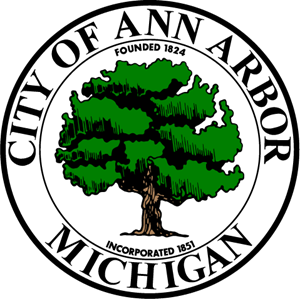The timeworn real-estate maxim is “location, location, location.”
When the location is Ann Arbor, one of the least affordable places to buy a home in Michigan, “timing” may be even more essential.
Ryan Stanton, the lead reporter on a package of stories this week on MLive highlighting Ann Arbor’s surge in building growth and housing costs, knows this firsthand. He moved to the city in 2009, during a national housing crisis, and was able to find reasonable rent. By 2013, as the economy improved, he sensed he’d have to act if he ever wanted to be a homeowner.
“I saw prices going up and said, ‘If I want to stay on Ann Arbor, I can either pay escalating rent that I probably won’t be able to afford into my old age, or I could buy a house now and lock in a fixed 30-year mortgage.
“So that’s what I did. I saw the writing on the wall.”
That writing was a line chart that shows an arrow going up like a hockey stick. The house Stanton bought in the Old West Side for under $200,000 is worth double that now. And that’s still well under the average house price in the Ann Arbor school district – $623,000. Rents for new units in the city have crested $3,000 a month in some instances.
Stanton, reporters Lucas Smolcic-Larson, Sam Dodge and Makayla Coffee, and photographer Jacob Hamilton have worked since spring to research and report this insightful and illuminating journalism. Their stories, photos and data lay out a powerful collision of market dynamics, social policy and city culture – and the resulting consequences.
For one, all but the wealthy are getting squeezed out of Ann Arbor. That includes lower-and middle-class people, young professionals and families, and even employees of the University of Michigan.
That has pushed people into neighboring communities and made those areas less affordable: The Ypsilanti School District, long seen as a less-expensive housing option, has seen home prices rise 39 percent in three years.
Hamilton chronicled the quest of Jean Whiting, a young professional seeking a home under $300,000. She started looking in Ann Arbor but gave up on that after a home she considered making an offer on sold for $55,000 over list price. She moved down to Saline without satisfaction, and now is considering going as far away as Monroe.
“We do a lot of great data-based reporting on the real-estate situation in the county that paints a broad picture of unaffordability, but Jean’s personal experience really drove it home,” Hamilton said.
Stanton wrote of a study that showed 77 percent of renters in Ann Arbor are priced out of buying a home in the city. But even renting is getting less feasible for many – reporter Dodge found one home on campus shared by 42 tenants. While that is extreme, the market for newer units is prohibitive. A studio apartment in a new development on Main Street is more than $2,200 per month, for example.
Ann Arbor is in a building boom, and our reporting lays out arguments from some community leaders that the city needs even more. But Stanton says history suggests that alone may not solve the affordability problem.
“You got pro-density advocates who say you can build your way out of this – just keep building more and more and more and you can gain ground,” he said.
“But Ann Arbor has been trying to do that for 20 years and not really gaining ground. So, it’s beyond a supply-and-demand issue at this point. It’s probably going to take rent control and maybe a lot more public subsidy.”
However, progressive social policy has proven no match for capitalism – dating back to the 1960s, when hippie leader John Sinclair attempted to build an egalitarian culture in Ann Arbor. In 1975, he declared the city “a rich college town” and moved back to Detroit.
Some powerful forces are revealed throughout our reporting on this issue. The University of Michigan is growing, in both employees and students; the city, quirky and cultural, is a vibrant and desirable place to live; and its current population of 120,000-plus is going to continue to rise as fast as housing is built. Demand drives up prices, and Ann Arbor is an in-demand destination.
“It’s like everybody says – it’s a wonderful, cool city and lots of people want to be here,” Stanton said. “It’s hard to imagine there will come a day when there will be more housing supply than there is demand in Ann Arbor.”



I don’t think it’s really true that AA has been “trying” to build housing for 20 years and not gaining ground. I was at a talk the other day where they said in 2016, they predicted that in order to meet Ann Arbor’s housing needs, they would need to build at least 140 new units of housing each year for many years. Since 2016, a whopping 50 units have been built. That’s kind of pitiful.